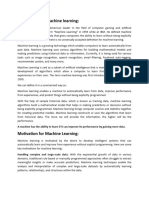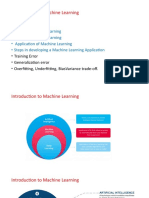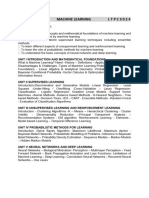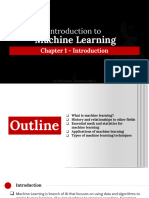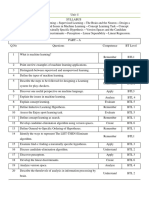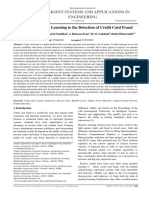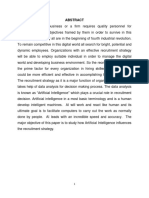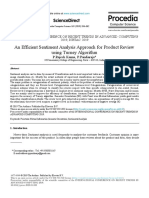0% found this document useful (0 votes)
29 views52 pagesMachine Learning-Basic Concepts
The document provides an overview of basic concepts in Machine Learning (ML), including definitions, techniques, and applications across various sectors. It discusses key aspects such as supervised, unsupervised, reinforcement, and semi-supervised learning, along with real-world applications like healthcare, marketing, and self-driving cars. Additionally, it addresses challenges like bias and variance in ML models, emphasizing the importance of feature selection and extraction for improving model performance.
Uploaded by
priyajecayCopyright
© © All Rights Reserved
We take content rights seriously. If you suspect this is your content, claim it here.
Available Formats
Download as PDF, TXT or read online on Scribd
0% found this document useful (0 votes)
29 views52 pagesMachine Learning-Basic Concepts
The document provides an overview of basic concepts in Machine Learning (ML), including definitions, techniques, and applications across various sectors. It discusses key aspects such as supervised, unsupervised, reinforcement, and semi-supervised learning, along with real-world applications like healthcare, marketing, and self-driving cars. Additionally, it addresses challenges like bias and variance in ML models, emphasizing the importance of feature selection and extraction for improving model performance.
Uploaded by
priyajecayCopyright
© © All Rights Reserved
We take content rights seriously. If you suspect this is your content, claim it here.
Available Formats
Download as PDF, TXT or read online on Scribd
/ 52



















